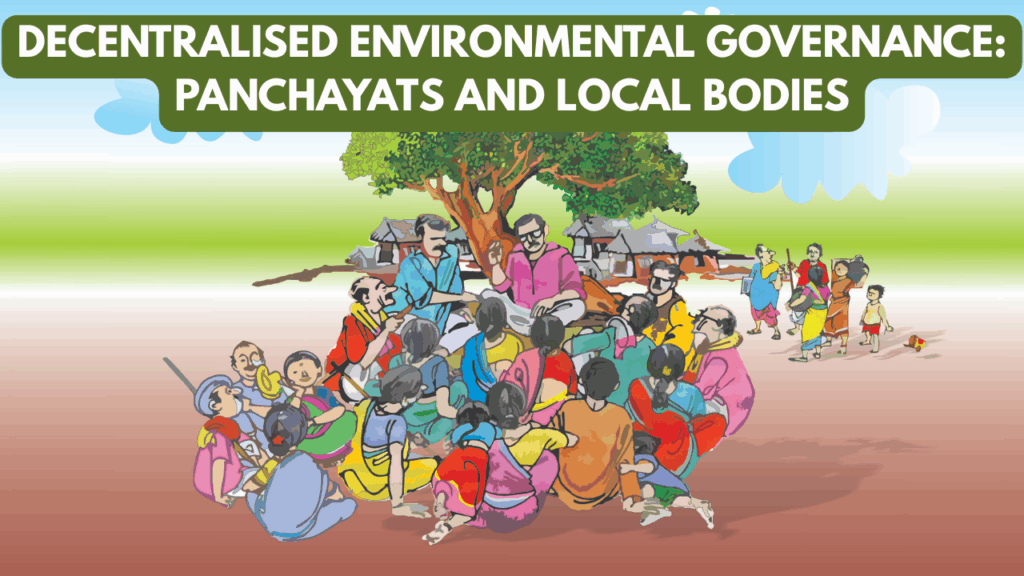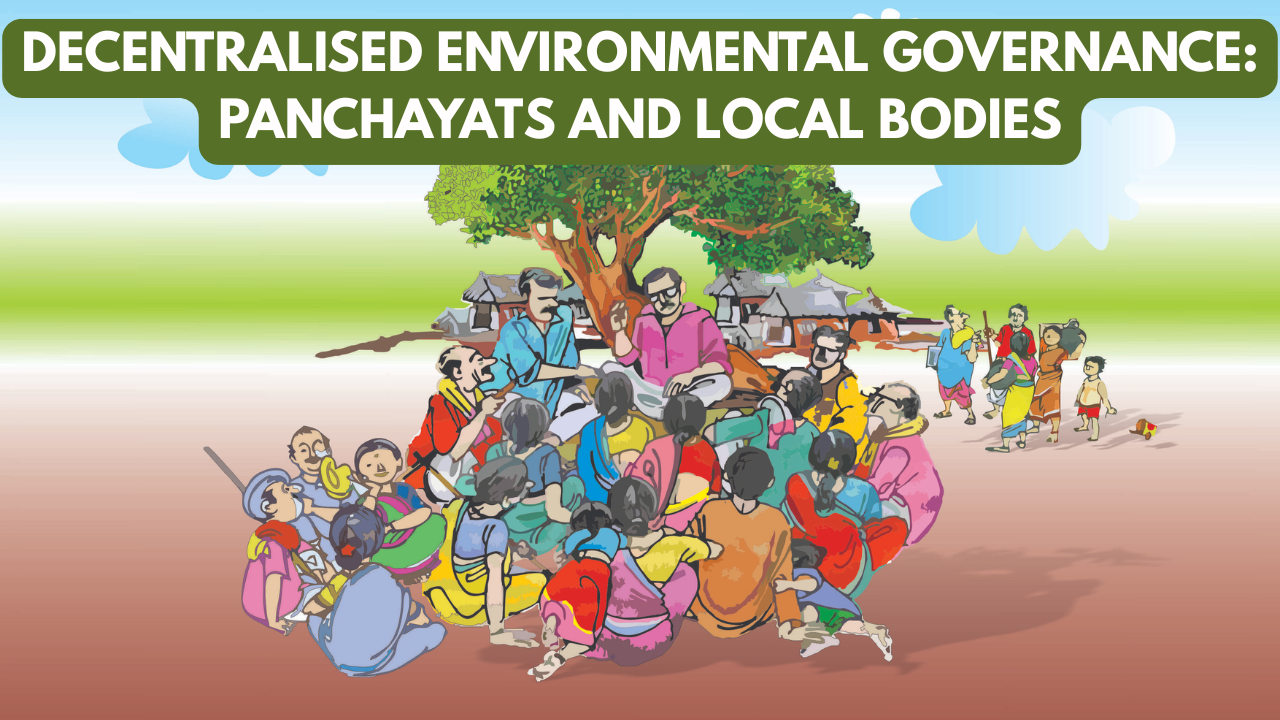
Environmental governance in India has historically been top-down, with state and central governments playing a dominant role in designing policies and regulations. However, with increasing recognition of the importance of community participation and grassroots involvement, decentralised environmental governance has emerged as a crucial approach. Panchayats and urban local bodies (ULBs) are now entrusted with responsibilities for natural resource management, waste handling, water conservation, afforestation, and climate resilience at the local level.
This system not only strengthens democratic governance but also ensures that environmental policies address the specific needs of communities directly dependent on local ecosystems.
Constitutional Basis of Decentralised Environmental Governance
The 73rd and 74th Constitutional Amendments (1992) gave constitutional status to Panchayati Raj Institutions (PRIs) and Urban Local Bodies (ULBs). These amendments devolved powers, funds, and functions to local bodies, including significant responsibilities related to environmental management.
Key constitutional provisions include:
- Article 243G: Empowers Panchayats to prepare plans for economic development and social justice, including environmental protection.
- Eleventh Schedule: Lists functions of Panchayats such as soil conservation, water management, forestry, and non-conventional energy.
- Twelfth Schedule: Assigns ULBs with duties like waste management, urban forestry, and public health.
Role of Panchayats in Environmental Governance
Panchayats are the closest institutions to rural communities and hence play a vital role in:
- Water Resource Management – Constructing check dams, ponds, and maintaining traditional water bodies.
- Forest and Biodiversity Protection – Managing community forests, grazing lands, and biodiversity registers.
- Waste Management – Promoting composting, segregation, and safe disposal of village waste.
- Climate Adaptation – Developing resilience strategies against droughts, floods, and soil erosion.
- Sustainable Agriculture – Encouraging organic farming and soil conservation practices.
Role of Urban Local Bodies (ULBs)
ULBs hold responsibility for managing environmental issues in cities and towns. Their functions include:
- Solid Waste Management – Collection, segregation, and scientific disposal of municipal waste.
- Air and Water Pollution Control – Monitoring emissions, sewage treatment, and enforcing pollution norms.
- Urban Green Spaces – Developing parks, gardens, and urban forests.
- Renewable Energy Initiatives – Promoting solar rooftops, biogas plants, and energy-efficient buildings.
- Climate Action Plans – Integrating sustainability into urban planning and disaster management.
Advantages of Decentralised Environmental Governance
- Localised Decision-Making – Solutions tailored to community-specific ecological needs.
- People’s Participation – Greater involvement of citizens in environmental conservation.
- Effective Monitoring – Local bodies ensure closer oversight of projects and compliance.
- Sustainability – Emphasis on traditional knowledge systems and local practices.
- Accountability – Local governance makes decision-makers directly answerable to citizens.
Challenges in Implementation
Despite their constitutional backing, Panchayats and ULBs face several hurdles in effectively managing environmental issues:
- Limited Financial Resources – Insufficient funding for large-scale environmental projects.
- Capacity Constraints – Lack of technical expertise and trained personnel.
- Overlapping Jurisdictions – Conflicts between state agencies and local bodies.
- Political Interference – Decision-making often influenced by political considerations.
- Awareness Gap – Limited environmental literacy among rural and urban populations.
Case Studies of Success
- Hiware Bazar, Maharashtra – A Panchayat-led water conservation model revived groundwater and transformed agriculture.
- Alappuzha, Kerala – ULB-led waste management system using decentralized composting won international recognition.
- Sundarbans, West Bengal – Community-led mangrove conservation initiatives strengthened climate resilience.
These examples show how empowered local bodies can achieve sustainable environmental outcomes.
Strengthening Local Environmental Governance
To overcome challenges, several steps can be taken:
- Capacity Building – Training local officials in environmental laws and technologies.
- Financial Empowerment – Increased budget allocation and access to green funds.
- Community Engagement – Awareness campaigns and participatory planning.
- Technology Integration – Using GIS, drones, and mobile apps for environmental monitoring.
- Collaborative Governance – Stronger coordination between state departments, NGOs, and local institutions.
Overview Table
| Aspect | Panchayats (Rural) | ULBs (Urban) |
|---|---|---|
| Constitutional Backing | Article 243G, Eleventh Schedule | Article 243W, Twelfth Schedule |
| Water Management | Check dams, ponds, irrigation projects | Sewage treatment, stormwater management |
| Waste Management | Composting, local waste disposal | Solid waste segregation, landfill management |
| Biodiversity Conservation | Community forests, biodiversity registers | Urban forestry, green belts |
| Climate Resilience | Drought-proofing, sustainable farming | Climate action plans, disaster management |
| Key Challenges | Limited funds, capacity gaps | Pollution control, urban sprawl |
FAQs
Q1. Why are Panchayats important in environmental governance?
They ensure grassroots participation and tailor solutions to local ecological needs.
Q2. What environmental responsibilities do ULBs hold?
They manage solid waste, sewage, pollution control, and urban greening.
Q3. How can decentralised governance be strengthened in India?
By enhancing financial support, training local officials, and integrating technology for effective monitoring.

